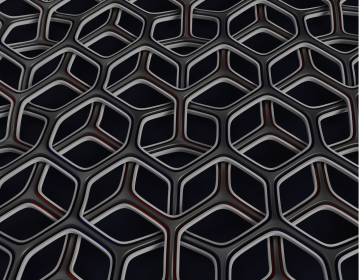Enhancing Composite Toughness a Reality with FRPCs
In the world of advanced materials, the path to enhancing composite toughness may be through the indispensable Fiber-Reinforced Polymer Composites (FRPCs). Their exceptional strength and resilience make them ideal for aerospace and renewable energy sectors, particularly in wind turbine blades. However, the challenge has always been improving the fiber-matrix interphase—the crucial zone where fibers and the surrounding polymer matrix interact. Enhancements in this area could significantly boost the performance and durability of composites, leading to safer and more efficient applications.
The Core Challenge: Fiber-Matrix Interphase
FRPCs are composed of fibers (like glass or carbon) embedded in a polymer matrix. The quality of bonding at the fiber-matrix interphase dictates the mechanical properties of the entire composite. Traditionally, this interphase has been a weak link, often leading to poor load transfer and reduced composite toughness. Improving this bond is essential for creating stronger, more durable materials.
Innovative Solutions with Hierarchical Interphase Formation
Recent advancements in polymer and processing sciences have paved the way for significant improvements in fiber-matrix adhesion. One promising approach involves the use of fiber sizing—a thin polymer coating on the fiber surface. This coating not only protects the fibers but also enhances their adhesion to the polymer matrix.
For example, incorporating nanomaterials like carbon nanotubes (CNTs) and graphene into the fiber sizing can create a hierarchical structure. These nanomaterials increase the fiber surface roughness and stiffness, leading to a remarkable improvement in interfacial shear strength (IFSS). Such enhancements result in composites that are not only stronger but also tougher, capable of withstanding greater stress without failing.
Applications in Aerospace and Wind Energy
In aerospace, where safety and performance are paramount, stronger and tougher composites can lead to lighter, more efficient aircraft. This translates to better fuel economy and lower emissions, aligning with the industry’s goals for sustainability.
For wind energy, particularly in wind turbine blades, enhanced composites mean greater durability and reliability. Wind turbine blades are subjected to harsh environmental conditions and significant mechanical stress. Improved fiber-matrix bonding can reduce the likelihood of blade failures, leading to lower maintenance costs and increased operational efficiency.
The Role of Non-Destructive Testing (NDT) Supporting Enhanced Composites
Non-Destructive Testing (NDT) plays a crucial role in ensuring the quality and integrity of these advanced composites. Techniques such as Mechanical Impedance Analysis (MIA), resonance testing, and other composite-specific methods are essential for detecting any flaws or weaknesses in the material without causing damage. By integrating these NDT methods, engineers to technicians can ensure that the hierarchical structures within the composites are intact and performing as expected and without degradation.
Conclusion
The development of hierarchical interphase structures in FRPCs represents a significant advancement for both the aerospace and renewable energy sectors. By leveraging advanced materials and NDT techniques, we can create composites that are not only stronger and more durable but also more reliable and efficient. This breakthrough promises to enhance the performance and safety of critical applications, from aircraft to wind turbines, driving progress towards a more sustainable future.


